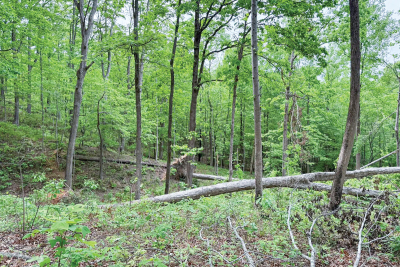Cherokee National Forest’s Proposed “Heavy Fuel Reduction”: Understanding the Implications of Salvage Logging
As I drive through the winding roads of the Cherokee National Forest, the scent of pine and earthy dampness fills my car. Having written about the Smoky Mountains region for years, I’ve developed a deep appreciation for these ancient forests. Today, though, I’m contemplating a controversial proposal that could significantly impact this beloved landscape.
The Forest Service’s New Proposal: What You Need to Know
The U.S. Forest Service recently released a scoping notice that has caught the attention of environmentalists and timber industry representatives alike. The proposal calls for “heavy fuel reduction” on nearly 3,000 acres of the Cherokee National Forest, primarily through what they term “commercial harvest” – or in simpler terms, salvage logging.
This isn’t just any logging operation. The proposal targets specific areas identified in detailed maps included with the notice, showing exactly which sections of this treasured national forest could soon see significant timber removal.

Understanding Salvage Logging in Our National Forests
For those unfamiliar with forestry practices, salvage logging involves removing dead, dying, or damaged trees after events like wildfires, insect infestations, or storms. While this might sound beneficial on the surface, the practice remains highly controversial among ecologists and conservation experts.
I’ve hiked these forests countless times, watching how dead trees naturally decay, creating rich habitat for woodpeckers, owls, and countless insects while returning nutrients to the soil. Nature has its own restoration cycle that has worked for millennia.
The Two Sides of the Debate
Proponents of the salvage logging plan argue several benefits:
- Reducing wildfire risk by removing potential fuel
- Creating economic opportunities through timber sales
- Potentially accelerating reforestation in damaged areas
Critics, however, raise significant concerns:
- Disruption of natural forest regeneration processes
- Soil erosion and watershed damage from heavy equipment
- Loss of wildlife habitat, particularly for species that depend on dead trees
- Reduction in biodiversity that comes with post-disturbance forest environments
What’s Really at Stake in the Cherokee National Forest?
The Cherokee National Forest spans over 650,000 acres across eastern Tennessee, serving as a crucial ecological corridor in the Southern Appalachian region. This forest isn’t just trees – it’s one of the most biologically diverse temperate forests in the world.
I’ve spent countless mornings watching the sun rise over these mountains, photographing rare salamanders found nowhere else on Earth, and documenting wildflower species that carpet the forest floor each spring. This ecosystem is intricate and interconnected in ways we’re still discovering.
| Cherokee National Forest Facts | Details |
|---|---|
| Total Acreage | Over 650,000 acres |
| Proposed Salvage Area | Nearly 3,000 acres |
| Notable Features | Part of the Appalachian Mountain chain, old-growth forest sections, diverse wildlife habitat |
The Public Comment Process: Make Your Voice Heard
The scoping notice marks the beginning of a public comment period where local residents and concerned citizens can provide feedback on the proposal. While the Forest Service has already conducted preliminary assessments, public input plays a critical role in shaping the final decision.
Having attended numerous Forest Service hearings over the years, I can attest that thoughtful, well-reasoned comments from the public genuinely impact these processes. If you care about the future of these forests, now is the time to get involved.
A Personal Reflection on Forest Management
I remember walking through a section of forest that had been salvage logged after a small fire about a decade ago. The contrast between that area and the adjacent untouched burn zone was striking. Where logging had occurred, uniform young trees grew in rows, with little understory diversity. The untouched section buzzed with life – woodpeckers working dead snags, wildflowers exploiting new sunlight, and a rich tapestry of natural regeneration.
This isn’t to say all forest management is harmful – thoughtful, science-based interventions can sometimes help restore balance, especially in areas where human activity has already disrupted natural cycles. The question is whether this specific proposal represents the best approach for this beloved forest.
What Happens Next?
The Cherokee National Forest officials have already begun the assessment process, though the scoping notice doesn’t provide complete details about their findings or the full scope of their plans. As this proposal moves forward, additional information will likely become available.
If you cherish these mountains as I do, I encourage you to stay informed, attend public meetings when possible, and submit comments during the designated periods. The future of these forests depends on engaged citizens who understand both the ecological and economic factors at play.
How You Can Learn More
For those interested in diving deeper into this issue, I recommend visiting the Cherokee National Forest’s official website or contacting their office directly. The full scoping notice, including the detailed maps of proposed logging areas, should be available for public review.
As someone who has written about and loved these mountains for years, I’ll be following this story closely and providing updates as new information becomes available.

